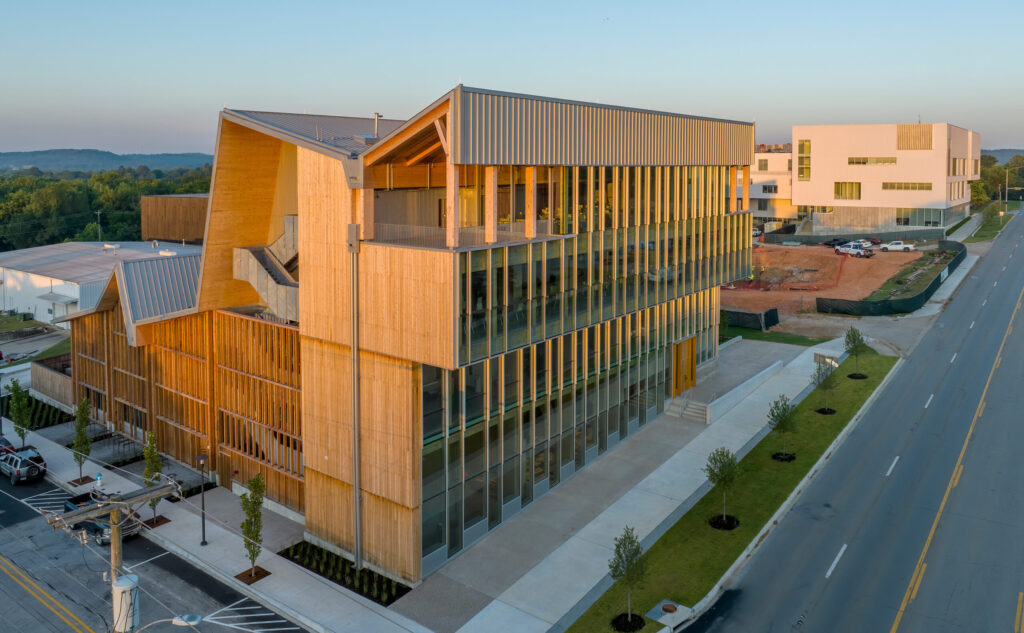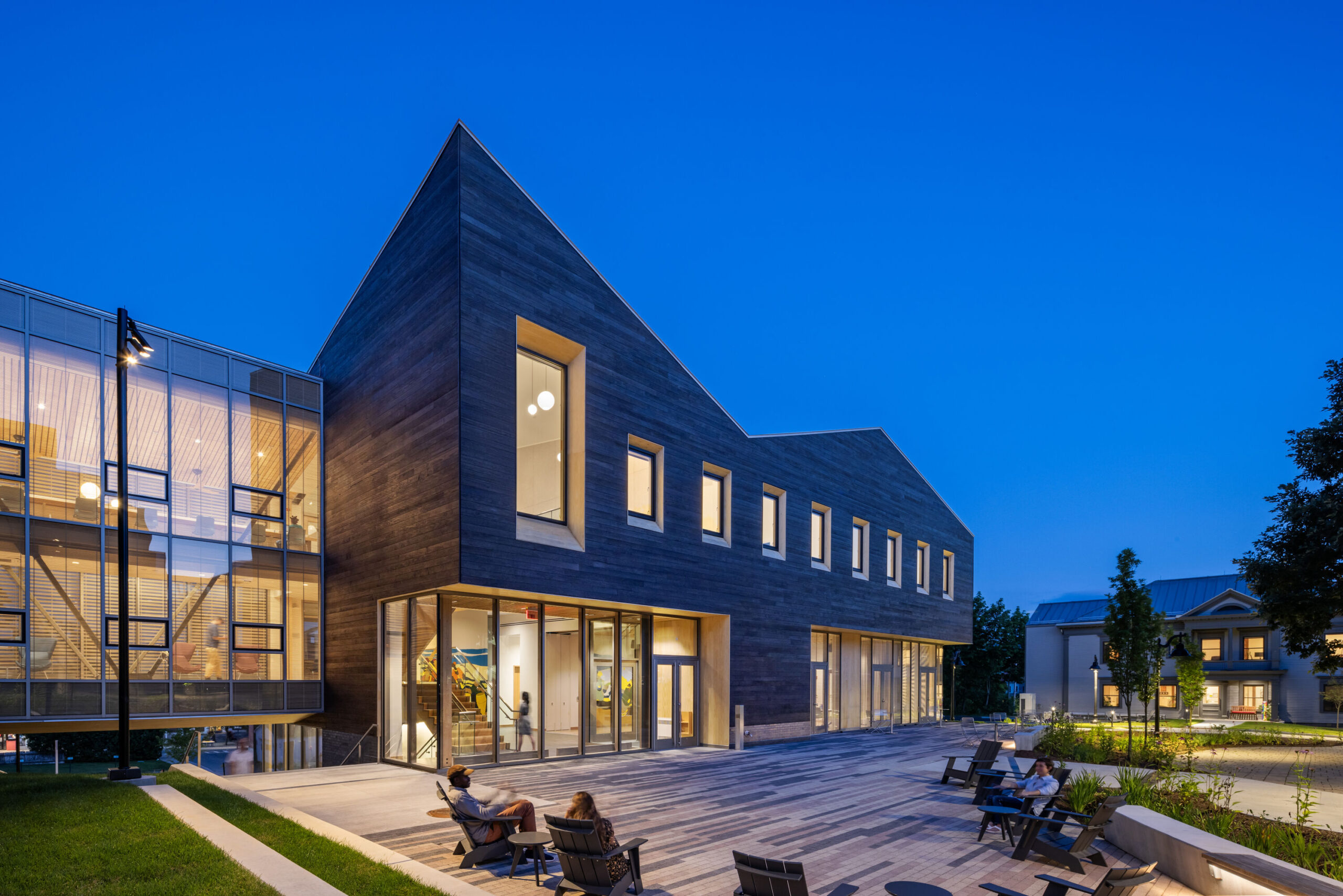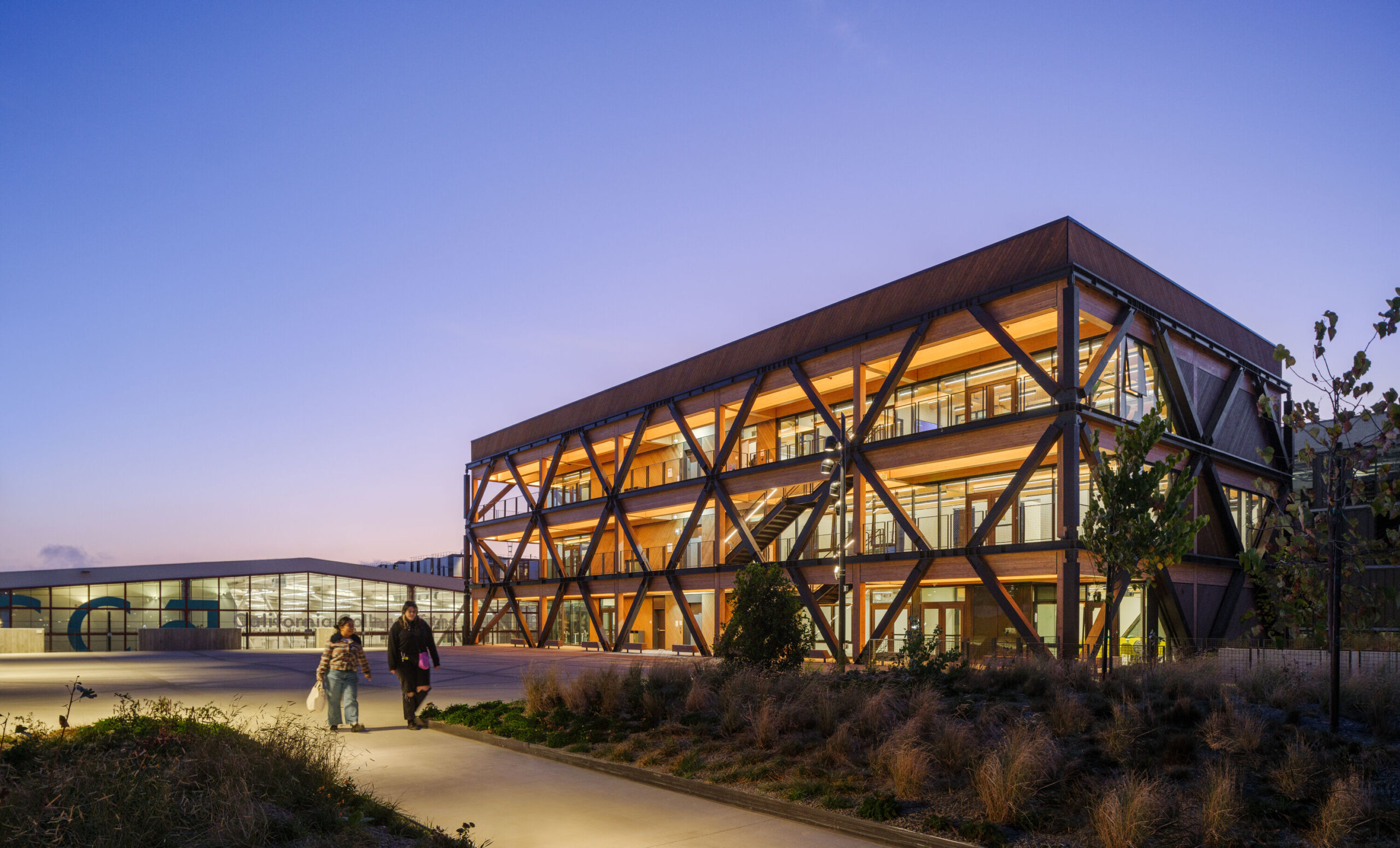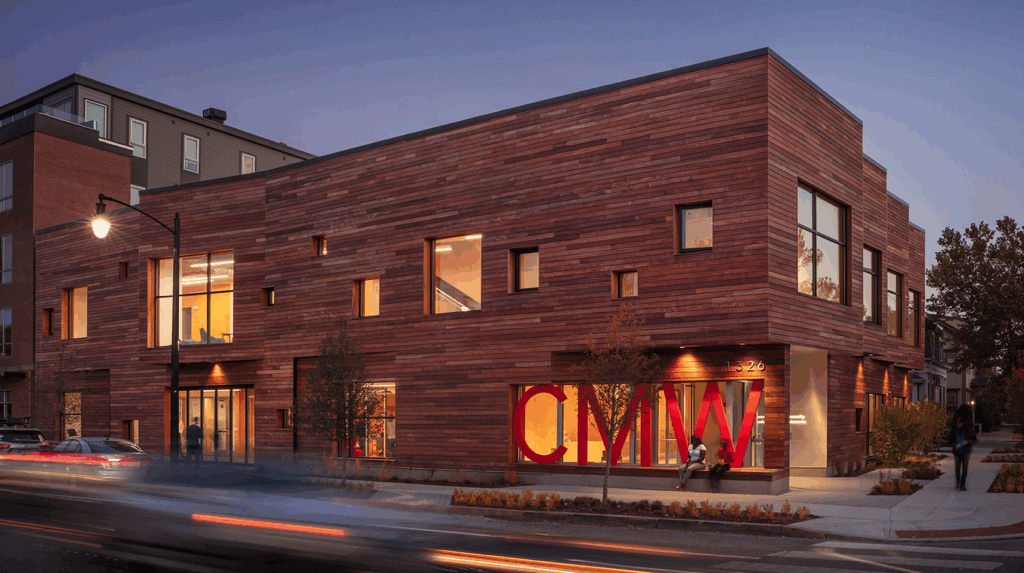Education, Mass Timber, Sustainability
UMass Amherst Design Building
The latest sustainable design practices and a model for integrating campus landscape and architecture
With a glulam frame and floor slabs of composite, exposed cross-laminated timber (CLT), the Design Building is a demonstration of leading-edge timber engineering; a concept informed by the school’s current research in building technology.
The design team chose mass timber over steel to remove 2,600 metric tons of carbon from the atmosphere.


The interdisciplinary building is home to three academic units: architecture; building and construction technology; and landscape architecture and regional planning. It intentionally features exposed structural elements and service systems for teaching, while its Trimble Technology Lab provides advanced tools for design research and development. The building’s multi-disciplinary program, organized around an interior courtyard of exposed timber and an exterior landscaped courtyard and outdoor classroom, will foster collaboration across the disciplines.
At the upper level, the building has a roof garden, which is supported by a long-span wood-steel truss system (a “zipper” truss) that is exposed in the atrium below. Other sustainable features include LED lighting, motion sensors, ample daylighting, electro-tinting glass, heat-recovery systems, bioswales, rain gardens, low-flow faucets and public transportation access.
Intended to demonstrate the latest sustainable design practices and serve as a model for the integration of campus landscape and architecture, the new four-story Design Building at the University of Massachusetts Amherst is the largest cross-laminated timber (CLT) academic building in the U.S. and one of the first institutional buildings in the Northeast to use a mass timber structure and was completed in January 2017.
The 87,000-square-foot facility is the most advanced CLT building in the U.S. and saves the equivalent of over 2,300 metric tons of carbon when compared to a traditional energy-intensive steel and concrete building. The university’s Building and Construction Technology program developed some of the CLT technology and has been testing native Massachusetts species for CLT suitability with support from a National Science Foundation grant. The building was designed by Boston architectural firm Leers Weinzapfel Associates and construction was managed by Suffolk of Boston.
Environmental Building Declaration
Environmental Building Declaration—Design Building, University of Massachusetts, Amherst Technical Report January 2017.
Athena Institute. 54 pages. Summary Brochure January 2017. Athena Institute. 1 page.
Even before its completion, the Design Building was featured in an exhibit at the National Building Museum in Washington, D.C.
At the conceptual stage of the Design Building project, the WoodWorks Products Council undertook a preliminary life cycle assessment (LCA) to demonstrate the significant environmental benefits associated with the wood option being considered. Once the decision was made to use wood, WoodWorks provided ongoing technical assistance and support related to the complete LCA of the final design undertaken by the U.S. Forest Service Forest Products Laboratory in cooperation with the Athena Sustainable Materials Institute. It is the first LCA to examine the impact of cross-laminated timber on a North American project.
Project Details
- Engineer
- Equilibrium Consulting Inc., Simpson Gumpertz & Heger
- MEP & Sustainability
- BVH Architecture, Atelier Ten
- Designer of Record
- Leers Weinzapfel Associates
- Owner's Project Manager
- Hill International, Inc.v
- Construction Manager
- Suffolk Construction
- Timber Structure
- Nordic Structures, North South Construction
- Landscape
- Stephen Stimson Associates Landscape Architects










